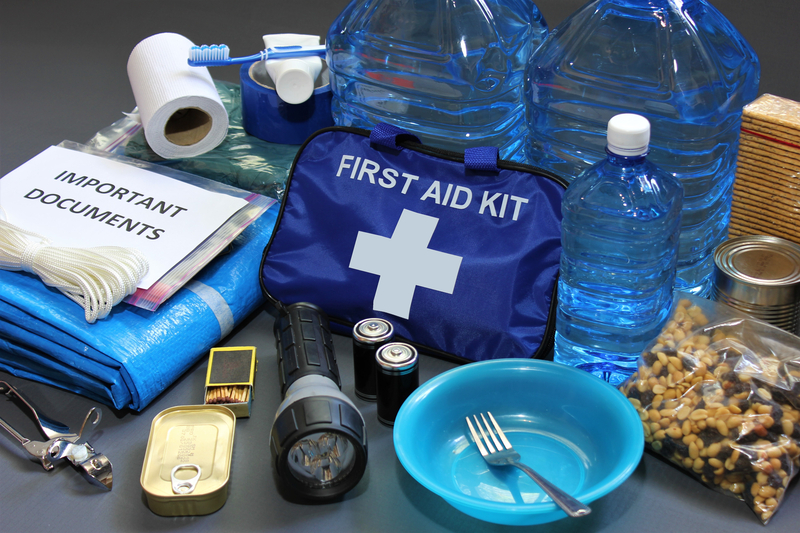Category: Uncategorized
The Great Resignation Continues in 2022
January 29, 2022

“The Great Resignation” is a term coined in May 2021 by Anthony Klotz, Ph.D., an associate professor of management at Mays Business School at Texas A&M University who predicted the mass exodus of employees abandoning jobs during the pandemic.
In April, a month before Dr. Klotz made this prediction, a record 4 million people quit their jobs, many of them in low-paying, inflexible industries such as retail trade sectors and food services. He explained that during the pandemic, employees have been able to reflect about family time, remote work, commuting, passion projects, life and death, and what it all means which led workers to consider alternatives to their current positions.
Because the latest data suggests this trend, also called the “Big Quit,” will continue through 2022, employees, as well as employers, must prepare for changes in the workforce.
Employees
Before you submit your resignation, consider the following suggestions to guide your decision:
- Reassess your duties: Expanding your responsibilities within the company may offer the growth that you’re looking for without leaving your workplace. Promotion within your company may lead to a higher salary and additional benefits. On the other hand, you may feel overworked or are experiencing burnout, resulting in work-related stress, and seeking a less demanding opportunity may be a solution during this difficult time.
- Meet with your employer: If you prefer to work remotely, meet with your employer and plead your case to work all or part of your workweek away from the corporate office, especially if you have health and safety concerns, childcare issues, or COVID-related care responsibilities. Explain how important work/life flexibility is to you and ask if your employer is willing to consider your needs for your home life situation. Take this opportunity to ask if your salary, benefits, and health insurance could be improved to entice you to stay.
- Be flexible with your transition: If possible, notify your supervisor in person when you decide to resign and be flexible about the ending date in your position. Be professional in your exit interview, request a letter of recommendation for your files, find out when you’ll receive your last paycheck, and ask about the continuation of your benefits.
- Assess your financial situation: If you determine that you need to continue receiving a steady paycheck and insurance benefits, secure another position or outline a solid self-employment opportunity before you resign. If you are close to retirement age, figure out if you can delay collecting Social Security and retirement benefits so you can collect higher monthly payments in the future.
Employers
Employers who want to reduce staff turnover and retain experienced employers may benefit from the following tips adapted from the article, “How Employers Can Overcome The Great Resignation” from the Worth Media website.
- Be creative in putting together benefits packages that can support a diverse workforce with broad, varying needs.
- Remain flexible when employees choose their work locations.
- Keep an open line of communication with your employees.
- Emphasize the importance of employees’ mental and physical well-being.
- Prioritize pay equity and adopt a spirit of transparency.
- Remind your employees about your company’s mission, values, and vision.
- Treat employees who do leave with respect, a sense of professionalism, and kindness.
Employers’ main goal during this tumultuous time should be to remain calm, listen to employee feedback, and use it to make any necessary changes to their business model, benefits package, and salaries.
InsureYouKnow.org
Are you planning to join “The Great Resignation” in 2022? If so, consider not only how you can improve your present work situation but also what the future may hold for your career choices, continuing education, home life, insurance coverage, and financial goals. As you put each of these options in place, keep records regarding your decisions at insureyouknow.org.
The Most Wonderful/Stressful Time of the Year
December 1, 2021

Welcome to what is referred to as both the “most wonderful” and the “most stressful time of the year.” During the second year of the COVID-19 pandemic, you may be experiencing stress and depression—unwanted emotions that can ruin your holidays and impact your physical and mental health.
Although you can’t control inflation, high gas prices, food and toy shortages, and shipping delays, you can be realistic, plan ahead, and seek support to overcome holiday stress and depression. You may even end up embracing the “most wonderful time of the year.”
Tips to Deal with Seasonal Pressures
Be realistic. COVID-19 cases are on the rise in some areas and even if you’ve been vaccinated, you may decide not to gather with friends and relatives in person. You can opt for a virtual celebration or increase efforts to share photos, texts, emails, phone calls, or videos with loved ones.
Avoid overspending, especially if you’re already feeling financial stress. Consider alternatives to expensive gifts by donating to charities in giftees’ names or by making and giving homemade presents.
Strive to decorate your home, create meals and desserts, and select gifts that will be appreciated not because they are “perfect” but because they are heartfelt and sincere.
Plan ahead. Compile lists of recipients and specific gift ideas; don’t go to browse in busy stores, hoping for inspiration. Save time and frustration caused by traffic and parking congestion by shopping online for items on your gift list. Schedule specific times to shop, bake, and attend social events. Plan menus and then create a detailed grocery list to prevent forgetting needed ingredients.
Acknowledge your feelings. Stress about gatherings with family and friends, or feeling grief about missing loved ones, may result in sadness and grief. Take time to acknowledge and express your feelings. You can’t force yourself to be happy just because it’s the holiday season. If you celebrate in person or in other ways as described above, set aside differences and controversial topics and concentrate on positive conversations.
Practice mindfulness by bringing your attention to the present moment and avoid getting stressed about past or future events.
Reach out. If you feel lonely or isolated, seek out community, religious or other social events, or communities. Many helpful organizations have websites, online support groups, social media sites, or virtual events that can offer support and companionship.
Volunteering your time and doing something to help others also are good ways to lift your spirits and broaden your friendships. Consider dropping off a meal and dessert at a friend’s home or to a community center that serves less fortunate individuals during the holidays.
Learn to say no. Set priorities based on preserving your well-being and don’t overextend yourself or you may wind up feeling resentful and overwhelmed. Learn to feel guilt-free when you decline invitations and recognize that you sometimes need to allow yourself to say no to demands on your time.
Maintain healthy habits. Get ample sleep, eat well—even at holiday events—and stay physically active in your daily routine. Maintaining healthy habits during the holiday season will be one of your best defenses against stress. When you feel a bout of stress coming on, have a healthy snack before a holiday party to curb your desire for high-calorie food and drink. Try deep-breathing exercises, meditation, or yoga. Avoid excessive tobacco, alcohol, and drug use.
Take a breather. Make time for yourself. Find an activity you enjoy like taking a walk, listening to calming music, or reading (or listening to) a book. Disconnect temporarily from social media and electronic devices.
Seek professional help if you need it. Even after following all the tips listed above, you may find yourself feeling continuously sad or anxious, beset by physical complaints and lack of sleep, and unable to face daily chores. If these feelings last for a while, talk to your doctor or a mental health professional. If you rely on medications to maintain your physical and mental health, make sure your prescriptions are up-to-date and that you have an adequate supply when your doctor’s office or pharmacy may be closed or have reduced hours during the holidays.
InsureYouKnow.org
At InsureYouKnow.org, you can keep a handy record of your prescriptions, refill expiration dates, and contact information for healthcare providers who prescribe and pharmacies that fill your medications.
In an Emergency, Be Ready to Go or to Stay
September 13, 2021

Emergencies often are unpredictable. But you can still plan for them. If you’ve experienced a catastrophic event—a hurricane, a flash flood, a fire in your home or on your property, or a winter storm that left you without electricity, food, and water—you may live in constant fear that you will relive a dangerous and stressful experience. Or, you can create a “go bag” and a “stay bag” that can help ease your mind in case of an emergency.
Emergency Go Bag
Prepare a portable kit that contains items that you’ll need to survive if you suddenly have to leave your home. Your emergency go bag should contain the following items:
- Personal identification
- Recent family photos for identification, including pictures of your pets
- Copies of important information, including contact numbers, passports, bank and credit card account numbers, medical records, and insurance information sealed in a waterproof container
- Bottled water and food, including high-energy snacks, in easy-to open containers, utensils, and bowls
- Prescription medications and a list of your prescriptions
- Small first-aid kit, including ice packs, bandages, hand sanitizer, gloves, ointment, pain relievers, stomach remedies, cough and cold medicines, and fluids with electrolytes
- Blanket/throw
- Sturdy shoes or boots and socks
- Warm clothes, rain gear, and hats
- Extra pair of glasses, contact lenses and supplies, dentures, and hearing aids/batteries
- Personal hygiene items, including face masks, soap, wipes, toilet paper, feminine hygiene products, toothbrush, toothpaste, paper towels, and household chlorine bleach
- Items such as canes, walkers, diapers, and formula for family members–children, seniors, and people with disabilities—with special needs
- Essential items for pet care: water, bowls, food, updated medical records, leashes, collar ID tags, crates, plastic bags, and carriers
- Flashlight and LED headlamp
- Candles
- Waterproof matches and lighter
- Battery operated/manual radio
- Extra batteries (sizes AA, AAA, C, and D)
- Pocketknife
- Whistle and pepper spray
- Extra house and car keys
- Solar and electric chargers for phones and other electronics
- Plastic garbage bags and toolkit
- Paper, pens, and tape for leaving messages
- Family communication plan that includes emergency phone numbers
- Regional road map if you need to travel
- Small amounts of cash–such as coins, one, and five dollar bills in case you can’t use your credit/debit cards
- Toys and games for kids
You also should consider to:
- Prepare an emergency go bag for each member of your household
- Store your emergency go bag in a place that is easy to get to, such as under a bed, in a closet, next to a door, in the garage, or in the trunk of your car
- Prepare emergency go bags for year-round use: spring, summer, fall, and winter
- Update your emergency go bag every six months
- Replace items that will expire in the upcoming months such as food and medical supplies
- Equip a vehicle bag with the following items:
- Jumper cables, flashlight, and extra batteries
- First aid kit
- Red bandana or help signal
- Packaged food, water, and a refillable water bottle for each person
- Sand or cat litter and a small shovel
- Gloves, hat, boots, jacket, blankets or sleeping bags, and rain gear
Although your emergency go bag will include a number of items, make sure your bag is sturdy and easy to carry.
Emergency Stay Bag
An emergency stay bag should contain a two-week supply of essentials in the event you have to hunker down at home without power, water, or heat. If you’ve prepared your emergency go bag, you can use many of its contents if you need to stay at home and wait for inclement weather or other adverse conditions to improve.
You’ll need greater quantities of supplies for your emergency stay bag and may want to add:
- Firewood if you’ll be relying on your fireplace for heat
- Extra blankets
- Duct tape
- Multipurpose tool
- Trash bags for sanitation
- Fire extinguisher
After you’ve collected extra items for your emergency stay bag, put them in one place—like a large plastic bin or two—so they don’t get used and will be at the ready if an emergency situation strikes.
InsureYouKnow.org
With the right gear in your emergency go and stay bags, you can be prepared to face unpredictable circumstances that force you to deal with whatever comes your way. In addition to keeping copies of important records safely in waterproof containers as recommended, you also should file important information, including contact numbers, passports, bank and credit card account numbers, medical records, insurance information, and a list of your prescriptions electronically at insureyouknow.org.
Safely Enjoy Summer Fun in the Sun
May 29, 2021

With students out of school and parents ready for a vacation, your summer planning may lead to seasonal activities and events outside during the warmest time of the year. While making a list of your fun in the sun options, keep in mind your family’s health and safety while avoiding the dangers of heat-related illnesses, water-related injuries, grilling hazards and food poisoning, allergy attacks, and the stress of traveling.
The Federal Occupational Health agency offers the following tips for balancing fun activities and sun safety.
Prepare for Heat and Sun
A big part of staying safe in the heat and sun is being prepared. Have an idea of how long you will be out in the sun and the heat, and then plan accordingly by:
- Limiting your outdoor activity, especially midday when the sun is hottest.
- Wearing and reapplying sunscreen as indicated on the package.
- Pacing your activity; starting activities slowly and picking up the pace gradually.
- Drinking more water than usual and not waiting until you’re thirsty to drink more.
- Wearing loose, lightweight, light-colored clothing that protects your skin.
- Wearing sunglasses and a hat.
- If possible, taking breaks from the heat and sun in a shady or air-conditioned location.
For more information, visit the Centers for Disease Control and Prevention’s (CDC) Keep Your Cool in Hot Weather! and Sun Safety pages.
Stay Hydrated
Dehydration is a safety concern, especially during the summer months. Be sure to drink enough liquids throughout the day, as your body can lose a lot of water through perspiration when it gets hot outside. Drinking plenty of water can be part of good nutrition, too. Snacking on water-rich foods like raw fruits and vegetables also can help keep you hydrated.
Without enough fluids, you may experience dehydration. Look for these signs:
- Extreme thirst
- Dry mouth
- Headache
- Muscle cramping
- Feeling lightheaded
- Foggy thinking
Learn more on the MedlinePlus Dehydration page.
Heed Water Safety Precautions
Swimming is an enjoyable way to both cool off and get some exercise, but it also takes extra precautions and vigilance. To lower the risk for water-related injuries or accidents:
- Always have adult supervision for children who are in or around water.
- Do not swim alone, and swim near lifeguards whenever possible.
- Learn to swim.
- If you have difficulty swimming, wear a life jacket when participating in water-related activities.
- Wear a life jacket when boating.
- Know local weather conditions and forecasts before swimming or boating.
For more information, visit CDC’s Water-Related Injuries page.
Additional summer safety reminders include the following tips from National Insurance Services:
Eliminate Grilling Risks
Grilling is a great way to make a delicious meal, especially during summer get-togethers and events. However, grilling carries a number of risks—from fire to food poisoning—that you must be aware of to keep your outing safe and enjoyable. Experts say that food poisoning peaks in summer months for two main reasons: bacteria grow fastest in warm, humid weather, and people generally do not pay as much attention to cleanliness when eating outside.
General Safety Precautions
- Do not allow children and pets to play near the grill until it is completely cool, and you’ve had a chance to put it away.
- Place your grill at least 3 feet away from other objects, including your house, vehicle, trees, and outdoor seating.
- Before using a gas grill, check the connection between the propane tank and the fuel line to make sure it is not leaking and is working properly.
- Only use starter fluid for barbecue grills that use charcoal. Do not use starter fluid for gas grills.
- If you suspect that your gas grill is leaking, turn off the gas and get the unit repaired before lighting it again.
- Never use a match to check for leaks.
- Do not bring your grill into an unventilated or enclosed space, such as a garage or inside your home. This is not only a major fire hazard, but it’s also a carbon monoxide hazard.
- Never grill on wooden decks, porches, or balconies.
Carcinogen Hazard Preventions
- Cook leaner meats that drip less grease. Opt for a turkey burger or a lean cut of beef, and cut visible fat from poultry. When fat drips into the coals or flames, smoke travels up to the meat and releases carcinogens.
- Marinate meat to reduce carcinogens by 87 percent. Herbs contain polyphenolic antioxidants, which prevent the formation of carcinogens on the meat’s surface.
- Scrub your grill with a wire brush after every use. This will prevent bits of leftover food from dropping into the grate and creating carcinogen-filled smoke.
- Use a nonstick cooking spray on the grill rack to prevent meat buildup.
Follow Food Safety Tips
- Wash your hands. You should do this before all types of food prep, and grilling is no exception. If you’re outdoors and there is no bathroom, use a water jug, some soap, and paper towels. Consider carrying moist towelettes for cleaning your hands.
- Separate raw and cooked food. Don’t use a plate or utensil that previously touched raw food to touch cooked food unless the utensil has been washed with hot, soapy water.
- Marinate your food in the refrigerator, not on the counter.
- Make sure food is cooked thoroughly to kill any harmful bacteria that may be present. Hamburgers should be cooked to 160 degrees Fahrenheit, or until they are brown all the way through. Chicken should be cooked to 165 degrees Fahrenheit.
- Refrigerate leftovers within two hours of being cooked—the sooner, the better.
Manage Allergies
Warm weather and high humidity can put a strain on seasonal allergy and asthma sufferers. It’s a peak time for certain types of pollen, smog, and mold. Below are some survival tips to help you manage your allergies during the summer months.
- Protect yourself during prime allergy time—stay indoors between 5 a.m. and 10 a.m., when outdoor pollen counts are usually the highest.
- Avoid extremes—going between intense outdoor heat and indoor air conditioning can trigger an asthma attack and other allergy symptoms.
- Wear a mask when mowing the lawn or if you know you are going to be around freshly cut grass. Also, take a shower, wash your hair, and change your clothes to remove any pollen that may have collected on your body. You should also dry clothing inside, rather than on an outside line.
- Patrol your yard for weeds such as nettle or ragweed and oak, birch, cedar, and cottonwood trees—they all can trigger allergies.
- If you’re allergic to bees, protect yourself. Wear shoes, long pants, and sleeves. It’s also a good idea not to wear scented deodorants, hair products or perfumes, as all of these can attract bees.
Travel Safely this Summer
The following tips can help you plan for a safe and fun road trip:
- Buckle up for safety; you’ll avoid a ticket, and more importantly, should you get into an accident, you’ll increase the odds of surviving the crash and reducing injuries for both you and your family.
- Get a good night’s sleep; drowsy drivers can be as dangerous behind the wheel as drunk drivers. And don’t think coffee or opening windows will be enough to keep you awake— there is no substitute for a good night’s sleep.
- Take a break from driving if you feel yourself getting drowsy. Get out of the car for some exercise or switch drivers if you have that option.
- Do not drink alcohol and drive—you put yourself and anyone around you in danger.
- Conduct a pre-road trip inspection on your vehicle—taking just 10 minutes to ensure your car’s tires are properly inflated, that the fluids are topped off, and that everything under the hood is all right—to identify and mitigate problems that could lead to future breakdowns.
Review CDC’s travel tips on the following topics that are continuously updated as needed:
- Domestic Travel During COVID-19
- When NOT to Travel: Avoid Spreading COVID-19
- Safer Travel Tips for Families with Unvaccinated Children
- Requirement for Face Masks on Public Transportation Conveyances and at Transportation Hubs
- Travel Health Notices
- Cruise Ship Travel
- International Travel During COVID-19
- Travel Recommendations by Destination
- After International Travel
- Travel Planner
- Travelers Returning from Cruise Ship and River Cruise Voyages
- Travel: Frequently Asked Questions and Answers
- Travelers Prohibited from Entry to the United States
- Communication Resources for Travelers
InsureYouKnow.org
When planning your summer vacations, keep track at insureyouknow.org of your health, automobile, boat, and travel insurance policies, as well as passports and COVID-19 vaccination records, for you and your family members. In case you face an emergency or need to prove your coverage, you’ll be able to refer to your secure documents online.
Planning to Retire? Find Answers to Social Security Questions
January 27, 2021

Social Security provides benefits to about one-fifth of the American population and serves as a vital protection for working men and women, children, people with disabilities, and the elderly. The Social Security Administration (SSA) will pay approximately one trillion dollars in Social Security benefits to roughly 70 million people in 2021. Almost eight million people will receive Supplemental Security Income (SSI), on average, each month during 2021. Beyond those who receive Social Security benefits, about 178 million people will pay Social Security taxes in 2021 and will benefit from the program in the future. That means nearly every American has an interest in Social Security, and SSA is committed to protecting their investment in these vital programs.
Social Security payments are adjusted each year to keep pace with inflation as measured by the Consumer Price Index for Urban Wage Earners and Clerical Workers. The 1.3 percent Social Security cost-of-living adjustment for 2021 is down from 1.6 percent in 2020. The average monthly Social Security benefit in January 2021 was $1,543. The maximum possible monthly Social Security benefit in 2021 for someone who retires at full retirement age is $3,148.
The most convenient way to get information and use online services from SSA is to visit www.ssa.gov or to call SSA at 800-772-1213 or at 800-325-0778 (TTY) if you’re deaf or hard of hearing. SSA staff answers phone calls from 8 a.m. to 7 p.m., weekdays. You can use SSA’s automated services via telephone, 24 hours a day.
What is the best age to start your benefits?
There is no one “best age” for everyone. Ultimately, it’s your choice. You should make an informed decision about when to apply for benefits based on your personal situation.
Your monthly benefit amount can differ greatly based on the age when you start receiving benefits.
- If you start receiving your benefits as early as age 62, before your full retirement age, your benefits will be reduced based on the number of months you receive benefits before you reach your full retirement age.
- At your full retirement age or later, you will receive a larger monthly benefit for a shorter period. If you wait until age 70 to start your benefits, your benefit amount will be higher because you will receive delayed retirement credits for each month you delay filing for benefits. There is no additional benefit increase after you reach age 70, even if you continue to delay starting benefits.
- The amount you receive when you first get benefits sets the base for the amount you will receive for the rest of your life.
What should you consider before you start drawing benefits?
- Are you still working? If you plan to continue working while receiving benefits, there are limits on how much you can earn each year between age 62 and full retirement age and still get all of your benefits. Once you reach full retirement age, your earnings do not affect your benefits.
- What is your life expectancy? If you come from a long-lived family, you may need the extra money more in later years, particularly if you may outlive pensions or annuities with limits on how long they are paid. If you are not in good health, you may decide to start your benefits earlier.
- Will you still have health insurance? If you stop working, not only will you lose your paycheck, but you also may lose employer-provided health insurance. Although there are exceptions, most people will not be covered by Medicare until they reach age 65. Your employer should be able to tell you if you will have health insurance benefits after you retire or if you are eligible for temporary continuation of health coverage. If you have a spouse who is employed, you may be able to switch to their health insurance.
- Should you apply for Medicare? If you decide to delay starting your benefits past age 65, be sure to go online and file for Medicare. You will need to apply for Original Medicare (Part A and Part B) three months before you turn age 65. If you don’t sign up for Medicare Part B when you’re first eligible at age 65, you may have to pay a late enrollment penalty for as long as you have Medicare coverage. Even if you have health insurance through a current or former employer or as part of your severance package, you should find out if you need to sign up for Medicare. Some health insurance plans change automatically at age 65.
How can you get a personalized retirement benefit estimate?
Choosing when to retire is an important and personal decision. The best way to start planning for your future is by creating a my Social Security account. With your personal my Social Security account, you can verify your earnings and use SSA’s Retirement Calculator to get an estimate of your retirement benefits.
What happens to Social Security payments when a recipient dies?
- If a person who was receiving Social Security benefits dies, a payment is not due for the month of his death.
- In most cases, funeral homes notify SSA that a person has died by using a form available to report the death.
- The person serving as executor of the decedent’s estate or the surviving spouse also can report the death to SSA.
- Upon the death of a Social Security recipient, survivors are generally given a lump sum payment of $255.
- Survivor benefits may be available, depending on several factors, including the following:
- If the widow or widower has reached full retirement age, they can get the deceased spouse’s full benefit. The survivor can apply for reduced benefits as early as age 60, in contrast to the standard earliest claiming age of 62.
- If the survivor qualifies for Social Security on their own record, they can switch to their own benefit anytime between ages 62 and 70 if their own payment would be more.
- An ex-spouse of the decedent also might be able to claim benefits, as long as they meet some specific qualifications.
- For minor children of a person who died, benefits also may be available, as well as to surviving spouse who is caring for the children.
How can you start receiving Social Security benefits?
- To start your application, go to SSA’s Apply for Benefits page and submit your application online.
- After SSA makes a decision about your application, you’ll receive a confirmation letter in the mail. If you included information about other family members when you applied, SSA will let you know if they may be able to receive benefits from your application.
- You can check the status of your application online using your personal my Social Security account. If you are unable to check your status online, you can call SSA at 800-772-1213 (TTY 800-325-0778) from 8 a.m. to 7 p.m., weekdays.
- You can do most of your business with SSA online. If you cannot use these online services, your local Social Security office can help you apply. Although SSA offices are closed to the public during the COVID-19 pandemic, employees from those offices are assisting people by telephone. You can find the phone numbers for your local office by using the Field Office Locator and looking under Social Security Office Information.
What if you want to withdraw your application?
After you have submitted your application, you have up to 12 months to withdraw it. You will be required to repay any benefits you’ve already received. Learn more about Withdrawing Your Social Security Retirement Application.
InsureYouKnow.Org
At insureyouknow.org, you can keep track of applications you submit to SSA and responses you receive for Social Security benefits. You also can file statements and notices you get from SSA throughout the years ahead during your retirement.
April Fools…
March 31, 2020

If 40 days ago – you turned on the TV or read the news which told you the world was in quarantine and curfew status, you may have called a friend to check or thought it was an April Fools prank. The rapid spread of COVID-19 has changed the globe, causing governments to enact shelter-in-place, quarantines and curfews. Knowledge of the virus began in December 2019 and became a pandemic in March 2020. The lives of many have changed from carefree to careful, from rushed to restful in an attempt to save the population from contracting the disease.
April Fools’ Day originated in a time of change. It is unclear of the actual origins, or how it has become a tradition from Europe to the Americas, but there are two main theories. The transforming of the seasons – Winter to Spring – may have precipitated the start of the April Fool’s tradition of pranks, or the introduction of the new calendar from Julian to Gregorian. The 1700 was a world without the technologies, however the pranks ranged from announcing a never-seen-before performance to the poisson-d’avril – April fish – which still continues today.
Though some of you may be homebound, or spending time indoors, here are ten easy Ideas for April Fools which can be implemented in your home. Hopefully, these can bring some smiles and stress-relief to start the month.
1 – Change the clocks
Many options with this one – An hour, three hours, make it earlier or later. This one is sure to make a person take a second look.
2 – Switch salt and sugar
Morning-coffee, or afternoon-tea with a spoonful of salt? A sweetened dinner? Stand away from the person consuming the food and have the camera ready.
3 – Rearrange the drawers – socks in the t-shirt drawer
Reach in your drawer and pull out the swimsuit, or winter scarf. Move the sock drawer down and the t-shirt drawer up.
4 – Hide bugs/snakes around the house
Not for the faint of heart – find some fake bugs in the children’s toys, or draw some in dark colors and create shadows. Record and replay the shrieks.
5 – Change outfits every 30mins and act like nothing is different
Take a chance to go through your closet and put together a new outfit every few minutes. A good way for you to try on your clothes, and the people in your home to take a pause.
6 – Put eyes on everything in the refrigerator
Find googly eyes and stick them on everything in the refrigerator for an eerie view of the contents. Opening of the door of the fridge has never been so anticipatory.
7 – Switch toothbrushes/soaps/mugs
For those of you with multiple bathrooms, switch the toothbrushes or soaps around.
8 – Wear a wig to bed
Adorn the Halloween wig and wait for the surprise in the morning.
9 – Change the ring tone and volume of a phone in your home.
Whether a cell phone or the house phone, your phone or your partners – a new sound in the home is cause for a few minutes of searching.
10 – Act like you are having a huge fight with someone – GOTCHA.
Pick a topic of contention, or of historical reference and have an intense one-sided conversation. This can work in person or over the phone and be sure to break the intensity with a distinct – GOTCHA.
At the end of the day – take a break from the routine and the demands of the day for some light-hearted humor. If you don’t have people in your home to play a practical joke on – utilize social media to tag a random picture with your friend’s name, or call someone and use a distorted voice.
Don’t forget to take pictures or videos and upload it onto InsureYouKnow.org. It’s a safe place to store all the information in case you need to access it remotely – or from the comforts of your own home.
When-I-Die-File
February 2, 2020

Sounds morbid, but it’s actually the kindest thing that you can do for your family. The life insurance plan – while useful, will be tough to access initially. The 401k and 529 accounts set up for the kids and grandkids – will be caught up in legalities for a few months. What the family really needs – right now, is to be able to download your mind and know all those little things. The When-I die file is exactly that…. The “fill in the blank” documents which explain all
We all know we need to remove the clutter, organize the bills, have a will, create the advanced directives for the medical community. It’s overwhelming and seems impersonal. This file goes a little deeper, and adds your personality to the documentation. The who, what, where, when, and why of your decisions. It provides the answers to – “what do you want when you die?”
When-I-Die…
- These are my financials. You may have money, savings, accounts, investments – or you may not; but how will those close to you really know. The scavenger hunt of locating the treasure may take years for your loved ones, without a quick listing of your financials. Account numbers are great, but at a minimum have a list of the financial institutions that you utilize often. You may be surprised at how many you have.
- This is why. The decisions listed in your will, advanced-directive, and material possessions are going to be black-and-white, and may leave divisions and heartache when it was unintended. A quick explanation document may assist the family and friends with understanding where your intentions really are. This is why my partner gets the money, and the children get the house. This is why there were 3 savings accounts. This is why I want my funeral in Dallas. The why question from children to parents, and parents to children starts when a child can talk, and continues throughout the lifetime, this gives the opportunity to answer a few of them.
- This is how. We cannot read your mind. So when the secret question or the password or the lucky number is requested– it is going to be tough to answer that. Accessing social media, email accounts, the cable/trash/cell phone account is going to be tough if we don’t know what you were using. The this-is-how is a step by step guide of getting into your day to day affairs and allowing communications to continue. An example would be your cell phone – if your immediate family cannot get into your contacts, how will they convey messages to those that may not immediately know of your passing.
- This is what I didn’t say. The plot line for many movies, books and dreams is a vision of a person who is passed conveying messages of love. There may also be family secrets of a recipe or hidden heirloom or photos in a closet. There is the conversations that didn’t happen about the way birth or death or the estrangement happens. All the things you didn’t get the opportunity to say. This can be created informally in a letter format – Dear Abby, there’s something I didn’t get to say…. Or more formalized bulleted memo. Here are 10 things….
Your physical file is ready and located in your assigned area, but what able the digital version. As you put together your soft-copy of your when-i-die file, consider uploading all your wishes, reports, documents, and memories onto InsureYouKnow.org. It’s a safe place to store all the information in case your loved ones need to access it remotely – or from your own home. You will have peace of mind that they will be able to find everything they need in an organized way – the way you left it. To learn more about the file – read the Time Magazine article
a DIME a dozen
December 15, 2019

definition: very common and of no particular value.
In 1930, the DIME was valuable. “For 10 cents, kids could spend an afternoon in a movie theater. We could buy a loaf of Bond Bread or a snack-size Frisbie pie, or ride the trolley car. And for a dime, people could walk into a tavern and get a cold glass of draft beer.” Today – the US currency has little value associated with the penny, nickel, dime and quarter – we focus on the dollars! Differentiating ourselves and our work is key – people and blogs are a DIME a dozen. With this in mind – I challenge us to review the acronym DIME. It is utilized to calculate the recommended amount of life insurance, but can also help you understand if you and your family are in a good space for 2020 and beyond.
D is for Debt
How much debt do you have? Your debt standing is defined by the amount that you owe to anyone for anything. The most common debts include – car loans, student loans, and credit cards. Buying items on credit card doesn’t mean that the resources are always available to cover the costs, and the holiday season sees the usage of credit cards increase exponentially to cover the “great deals” during Black Friday and Cyber Monday in preparations for Christmas, Hanukkah, and New Year celebrations. Mortgage payments are covered under M.
When you have totaled the debt amount – do you have the assets available to cover the debts or would your family need to find the resources to pay this in an emergency? This amount would be the base number for your life insurance policy.
I is for Income
What is your income? Your income is defined by the money that is coming in – and is the number that is utilized when filing taxes. The most common income streams include – salary (yours and your partner), interest (from saving accounts/401K), and dividends (stocks and bonds). Everyone has an income – whether it’s from a business or rental properties, or your Social Security checks.
When you have totaled your income amount – multiply this by 10. This is considered a good number to have as a resource for 10years if your income source was to disappear. Many times this happens when you retire. This amount is also a value for calculating the amount of life insurance you may want to purchase
M is for Mortgage
What is your mortgage payment? Your mortgage is defined as how much you owe on your home AND any other properties that you own. Renters are advised to multiply rent by 10 to find this number.
When you have totaled this amount – this is another expense that will need to be covered to ensure you and your family have a place to live. Life insurance can assist with this payment when you are unable to.
E is for Education or Emergency“What did the dime say to the penny? At least I have more cents than you.” If you have children or grandchildren, the gift of education would be a worthy investment for future generations. To keep things simple – the $100,000 figure has been suggested which could be used for private education in the K-12 or University level – PER person. If there are no juniors, the E can represent your emergency fund. $100,000 for yourself and partner is a base figure that would cover a critical illness or weather disaster. Now that you have read this blog, and know the DIME formula – take the next step and review your personal numbers. As Ralph Waldo Emerson said – The whole value of the dime is in knowing what to do with it. Insureyouknow will help you track these numbers and see how they change year over year – and how close you are to achieving the magic number. Whether you choose to purchase life insurance or not, the Insureyouknow tool is a place to store your digital documents to access from your home or on-the-go.
Good-bye, 2019! Hello, 2020!
December 1, 2019

As 2019 ends, take time to reflect on your accomplishments, lessons you learned, and the knowledge and skills you acquired. Self-reflection helps build emotional self-awareness that enables you to ask yourself relevant questions and to gain a better understanding about your reactions, strengths, weaknesses, and motivational factors. An annual review is a great way to remember your favorite moments, take stock of the minor and major events of the year, and to plan for the coming year.
Areas for reflection on and questions to consider include:
Career
- What were the most important goals you proposed and accomplished this year?
- Did you deal with career challenges and plan for warranted changes?
- Did you improve your competencies in knowledge and skills?
- What is your most pressing unfinished project and what are your plans to complete it?
- Do you have any other goals that you didn’t meet in 2019?
Health
- What were your lifestyle, fitness, and diet accomplishments?
- Which healthy habits did you adopt and which unhealthy habits did you abandon?
- Did you review your health insurance plan to determine if you are adequately covered and are spending an appropriate amount of money on the level of coverage you need?
- What health challenges did you face and did you heed warning signs about health set-backs or need for medical check-ups?
Relationships
- What were the most significant changes in your personal and professional relationships?
- Did you make time for your family, friends, and colleagues?
- Did any of your existing or new relationships deserve more attention?
- Did you successfully mentor someone who relied on you for guidance?
- Did you willingly seek assistance from current and new people in your life?
Finance
- Did you keep track of and act on acquired debt as well as retirement, savings, and emergency fund options?
- Did you participate in realizing business-related financial successes (or failures)?
- What risks did you take and how did they pay off?
Emotions
- Did you try to understand your emotional needs and motivations?
- Did you communicate with others by expressing your feelings and by listening to and appreciating other people’s points of view?
- What do you wish you had done differently and how could you have done better?
- What new things did you discover about yourself that you tried to improve?
Joyful Endeavors
- Did you enjoy spending time on hobbies, vacations, and fun activities with family and friends?
- Did you try any new activities that you will add to your repertoire?
Technology
- Did you face new technological challenges at work or home?
- Did you evaluate your Wi-Fi needs and upgrade your home or office environment based on your assessment?
- Did you subscribe to or renew an insureyouknow subscription to allow you to store your meaningful and vital records in one secure easy-to-use location?
If you maintain a printed or virtual calendar/planner or diary/journal, save email messages, or participate in social media, you can refer to these daily, weekly, or monthly records to review your 2019 accomplishments. When spending time on self-reflection, jot down activities in a notes app on your phone or tablet, in a document on your computer, or by using pen and paper. By holding yourself accountable for personal and professional choices in 2019 and determining a successful course to take in 2020, self-reflection allows you to:
Recognize accomplishments and congratulate yourself.
Reflect on lessons learned, as well as knowledge and skills acquired.
Acknowledge mistakes to use as a self-improvement tool.
Analyze how you to do better in 2020.
Figure out what gives you joy and you are truly passionate about.
Insureyouknow has a tool available to track accomplishments and lessons learned upon completion of your annual self-reflection or any time throughout the year. You can digitally file data to refer to as you continue your self-reflection journey that will allow you to remember 2019 in order to prepare for 2020.
4 Reasons You Should Check—and Double-Check—Your Beneficiaries
August 6, 2018
 The whole reason you got life insurance was to protect your loved ones. But if you’re not careful, your life insurance money may not end up in the hands of the individual you intended.
The whole reason you got life insurance was to protect your loved ones. But if you’re not careful, your life insurance money may not end up in the hands of the individual you intended.
Naming your beneficiaries sounds like a simple enough process, and in general it is. The problems arise when you don’t provide enough information about your beneficiaries or your life circumstances change (and trust us, circumstances always change).
Here are four reasons you should check—and double-check—your beneficiaries today.
- Your beneficiary has a common name. According to Ancestry.com, there are 38,313 James Smiths and 32,092 Maria Garcias in the United States. If it’s not immediately clear which James Smith or Maria Garcia you selected as your beneficiary, things can get complicated very quickly. Even if it seems clear to you, it’s better to err on the side of caution. Include Social Security numbers and addresses for your beneficiaries so there is no question about who will receive the proceeds of your life insurance policy.
- You get divorced and/or remarry. After a painful divorce, you’ve met and married the love of your life. Congratulations! Unfortunately, your life insurance company wasn’t invited to the wedding. After major life changes like a marriage or divorce, you’ll want to update your beneficiaries. Otherwise, your ex may get a sudden windfall while your beloved spouse ends up with nothing.
- You have another child. You thought you were done having children. Surprise! In between diaper changes and much-needed naps, be sure to add your new baby to your policy as soon as possible. Note that minors may not receive a life insurance payout. Until your child is an adult, you’ll need to name a custodian, guardian or trust as the beneficiary. Even if your child legally is an adult, you may want to consider establishing a trust to manage the proceeds until your child hits 25 or 30.
- Your primary beneficiary dies before you do. There are two types of beneficiaries: primary and contingent. The primary beneficiary is the individual who will receive the proceeds of your policy, while the contingent beneficiary is in place in case your primary beneficiary dies. If your primary beneficiary does indeed die before you, it’s a good idea to update your beneficiaries and make sure you still have both a primary and a contingent beneficiary.
There are a few other things to keep in mind when it comes to naming your beneficiaries. First, remember that your life insurance policy is a contract, and as such, the life insurance company is obligated to give the proceeds of your policy to whomever you named as your beneficiary no matter what another document says. In other words, your life insurance policy supersedes your will. Make things easier on everyone and be sure your wishes are reflected correctly in both documents.
Second, you can name multiple primary beneficiaries. To keep things simple, it’s a good idea to assign percentages to each beneficiary rather than a set dollar amount.
Finally, as with all estate planning, communication is key. According to Consumer Reports, 1 out of every 600 people is the beneficiary of an unclaimed forgotten or misplaced life insurance policy. Make sure your loved ones know you have a life insurance policy. Tell them you have uploaded it to InsureYouKnow.org, and let them know how to access it. The last thing you want is for all your careful planning and preparation to go to waste.
